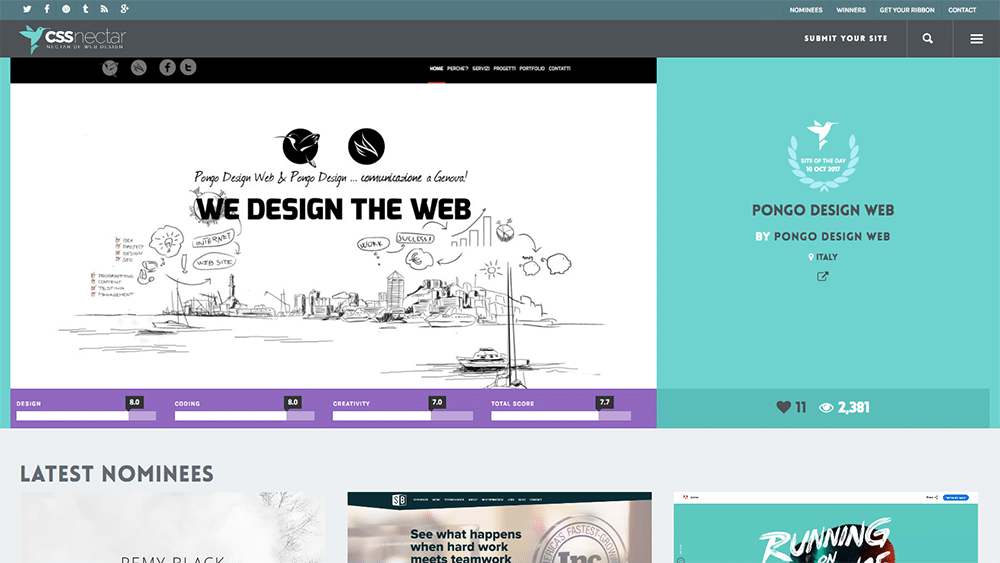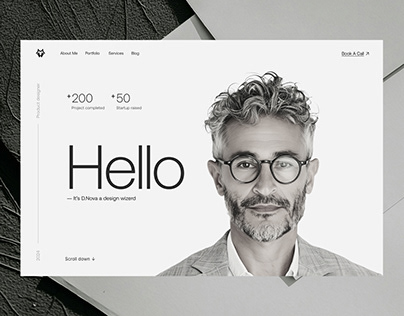Why Choosing the Right Website Design Can Make or Break Your Online Reputation
Why Choosing the Right Website Design Can Make or Break Your Online Reputation
Blog Article
Modern Site Layout That Catches Focus and Converts
In a progressively digital landscape, modern-day site layout has emerged as a critical element in capturing user interest and driving conversions. As we check out these vital parts, it comes to be clear that comprehending their interplay can substantially impact a website's performance and individual complete satisfaction.
Importance of Visual Pecking Order
Visual pecking order is a crucial component in internet site layout, as it guides individuals' attention and improves their overall experience. By purposefully arranging web content, designers can direct customers to one of the most vital details first, thus enhancing involvement and enhancing use. Efficient visual power structure employs various techniques, consisting of dimension, color, spacing, and contrast. Bigger aspects normally attract the eye, while contrasting shades can highlight essential messages, making them stand out among even more restrained components.
Integrating a sensible flow in web content arrangement is essential; as an example, positioning the most vital info at the top of a page fosters instant recognition. Regular use of typography, such as varying font sizes and styles, assists establish a clear web content structure. This organization not just help in navigation however likewise develops trust, as users really feel a lot more comfortable when they can quickly discover what they are looking for.
Inevitably, a well-executed visual hierarchy not just boosts visual charm but likewise substantially affects user habits. By prioritizing necessary aspects and guaranteeing a seamless experience, designers can efficiently transform site visitors into customers, enhancing the importance of this fundamental layout principle in modern website advancement.
Responsive Layout for All Tools
Creating a smooth experience across numerous tools is necessary in today's electronic landscape, where users access web sites from smartphones, desktops, and tablet computers alike. Receptive style is a critical method that makes sure websites adapt fluidly to various screen sizes, resolutions, and orientations. By using adaptable grids, pictures, and CSS media queries, designers can develop layouts that preserve visual integrity and capability, despite the device being utilized.
The importance of receptive style extends past visual appeals; it directly affects individual engagement and conversion prices. A web site that operates well on all gadgets motivates longer brows through and reduces bounce rates, as individuals are extra most likely to interact with web content that is easy to navigate. In addition, internet search engine, specifically Google, focus on mobile-friendly sites in their rankings, making receptive design an essential component of search engine optimization (SEO)
Incorporating responsive layout not just improves user experience but additionally streamlines the growth procedure. By creating a solitary website that functions throughout devices, organizations can conserve time and resources compared to establishing different mobile and desktop computer versions. Ultimately, receptive layout is a basic method for contemporary internet site style, ensuring accessibility and satisfaction for all customers, no matter their device.
Engaging Interactive Aspects
While a responsive design prepares for a practical site, including appealing interactive aspects is crucial for capturing customer focus and fostering much deeper connections. Website Design. Interactive elements, such as computer animations, tests, and clickable infographics, produce an extra vibrant customer experience, motivating visitors to spend more time on the website
Including interactive features can also guide users via facility information, making it much easier to absorb content. Interactive sliders can show product variants, while embedded videos can offer demos or endorsements that reverberate even more than fixed images or text. Gamification strategies, like benefits for finishing jobs or involving with material, can enhance individual motivation and retention.
Efficient use of interactive components not only enhances the user experience however can also bring about greater conversion rates. By making communications helpful and enjoyable, organizations can grow a feeling of loyalty and count on with their audience. Nonetheless, it is essential to balance interactivity with performance; excessively intricate functions might impede site rate, adversely affecting customer contentment. Ultimately, incorporating well-designed interactive aspects can significantly raise a website's efficiency, driving involvement and conversions in today's affordable electronic landscape.
Streamlined Navigating Practices
Efficient navigation is a keystone of any kind of effective website, as it straight influences individual experience and web content accessibility. Structured navigation techniques make certain that customers can quickly locate Source information, boosting their interaction with the site. A well-structured navigating food selection must be instinctive and straightforward, normally including a minimal number of key groups to stay clear of overwhelming visitors.
To achieve structured navigating, developers ought to prioritize a hierarchical framework that rationally organizes material. Carrying out breadcrumb trails can give users with context about their existing place within the site, permitting smooth backtracking. Additionally, using drop-down menus can successfully save room while still supplying access to subcategories.
Responsive layout is crucial, as navigation needs to be useful throughout all devices (Website Design). Mobile customers, in certain, take advantage of touch-friendly menus and retractable sections that keep usability without endangering aesthetic appeals

Efficient Call-to-Action Methods
A well-crafted call-to-action (CTA) is important for assisting users toward preferred outcomes on a website, as it urges them to involve with web content or make an acquisition. To optimize their performance, CTAs should be clear, engaging, and strategically put throughout the website.
First, make use of action-oriented language that connects seriousness or value, such as "Begin," "Sign up with Now," or "Insurance claim Your Price cut." This language not only encourages users but likewise sets clear assumptions regarding the next steps.
Second, consider layout components; CTAs must stand out visually via contrasting colors, adequate whitespace, and noticeable positioning. A switch that is very easy to see and click boosts the possibility of customer interaction.
Additionally, customizing CTAs based upon customer actions or demographics can substantially improve involvement. Customized messages reverberate more with individuals, driving higher conversion rates.

Conclusion
To conclude, contemporary internet site design highlights the combination of aesthetic hierarchy, responsive designs, involving interactive components, structured navigating, and effective call-to-action techniques. These elements jointly improve customer experience, making sure check here that site visitors remain engaged and encouraged to check out content better. By focusing on these design principles, companies can dramatically boost customer retention and conversion prices, inevitably leading to greater success in the digital landscape. The continuous evolution of web design highlights its vital function in efficient on-line interaction and advertising.
In a progressively electronic landscape, modern-day internet site style has actually emerged as an essential aspect in capturing user interest and driving conversions.Aesthetic hierarchy is an important component in website layout, as it overviews individuals' interest and enhances their total link experience.The value of responsive style extends past appearances; it directly affects customer interaction and conversion prices.Incorporating receptive design not only improves individual experience however likewise simplifies the growth procedure. Eventually, receptive style is a fundamental method for contemporary web site design, making certain ease of access and fulfillment for all customers, regardless of their tool.
Report this page